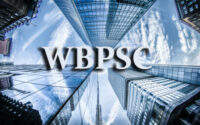WEBCSC Accountancy Question Papers for West Bengal Co-operative Service Commission Examination
Before starting the WEBCSC Accountancy Question Papers practice, every candidate must know about the syllabus and Exam Pattern. Because West Bengal Co-operative Service Commission Accountancy Papers are only for reference.

You will not get the exact questions in your WEBSEB exam. After completing your subject wise preparation, start to practice WEBCSC Accountancy Model Papers. The West Bengal Co-operative Service Commission Accountancy Previous Year Question Papers are very helpful to score more marks in the exam.
So, click to download the reference materials for the WEBCSC Exam preparation on Fundamentals of Accountancy. The West Bengal Co-operative Service Commission Accountancy Previous Papers will also be available on its official site.
Without visiting the site, you can just click the below links for free download of WEBCSC Accountancy Practice Papers. Download the WEBCSC Accountancy Solved Papers.
WEBCSC Accountancy Sample Question Papers
1. Goodwill is a —
a) Fixed Asset
b) Current Asset
c) Fictitious Assets
d) Wasting Assets
2. Liquid assets is equal to —
a) Current Assets — Stock
b) Current Assets — Stock and prepaid expenses.
c) Current Assets — Fictitious Assets
d) Current Assets — Prepaid Expenses
3. Goods purchase on credit from Mr. X amounting to Rs 1,000 wrongly debited Rs100 in purchase account and credited to Mr. X account by Rs 100/- is a —
a) Error of Omission
b) Error of Commission
c) Error of Principal
d) Error of misposting
4. To test the liquidity of a concern which of the following ratio is useful?
a) Acid test ratio
b) Capital turnover ratio
c) Bad debt to sales ratio
d) Inventory turnover ratio.
5. Cash Account is a
a) Personal account
b) Real account
c) Nominal account
d) Contingent account
6. Payment of interim dividend is a
a) servicing of funds
b) application of fund
c) no flow of fund
d) none of these.
7. The Trial Balance checks
a) the arithmetical accuracy of books
b) the honesty of book-keeper
c) the valuation of closing stocks.
8. Capital Account is a
a) Personal account
b) Real account
c) Nominal account
d) Contingent account
9. Choose the correct statement.
a) Patent Right is a Tangible Assets
b) Bills Receivables is a Fixed Assets
c) Bank Overdraft is a current liability
d) Outstanding rent is a fixed liability
10. Which of the following is true?
a) Keeping systematic recording of business transaction is not the function of financial accounting.
b) Accounting is concerned with monetary transactions.
c) Accounting is concerned with past as well as future events.
d) Business and businessmen are the same identity from accounting point of view.
Also Read | Computer Awareness Model Questions
11. A discount given for early or timely payment is called —
a) Trade discount
b) Rebate
c) Cash discount
d) Commission
12. Accounting is also defined as an ‘information system’ because —
a) The function of accounting is to provide quantitative information, primarily financial in nature, about economic entities
b) Every system is ‘information system
c) Anyone can get required information from accounting
d) None of the above.
13. Accounting Standards are issued by —
a) Central Government
b) State Government
c) Institute of Chartered Accountants of India
d) Reserve bank of India
14. Which of the following equitation is correct?
a) Assets + Liabilities = Capital
b) Capital = Assets — Liabilities
c) Capital — Liabilities = Assets
d) Capital + Assets = Liabilities
15. Ledger is a book in which —
a) Only real accounts are opened.
b) Only real and personal accounts are opened.
c) All the real, personal and nominal accounts are opened.
16. Balance Sheet of a firm shows the –
a) Balance in all accounts
b) Financial position of the business
c) Profit and loss of the firm
d) Day to day transactions
17. Which of the following balances appears on the debit side of the Trial Balance?
a) A loss
b) A expense
c) An asset
d) All of the above
18. Capital expenditure is an expenditure which
a) Benefits the current accounting period
b) Will benefit the next accounting period
c) Result in the acquisition of a permanent assets
d) Result in the acquisition of a current asset
19. Depreciation appearing in the trial balance should be —
a) Debited to Profit and Loss Account
b) Shown as liability in Balance Sheet
c) Reduced from related asset in balance sheet
d) Both (a) and (c) above
20. Carriage on goods purchased is shown in
a) Profit and Loss account
b) Trading account
c) Balance Sheet
d) Suspense A/c
e) Only personal and nominal accounts are opened.
Read More | Banking Awareness Old Question Papers
21. Bad debts recovered account will be transferred to —
a) Bad Debts Accounts
b) Trading Account
c) Profit and Loss Account
d) Provision for Doubtful Debts Account
22. Patent rights account is the nature of —
a) Nominal account
b) Personal account
c) Real account
d) None of the above
23. Which of the followings is not a contract?
a) An agreement to sale a plot of land
b) An agreement of supply and purchase
c) A loan agreement between borrower and a bank
d) A written commitment — of unconditional donation
24. Liquid asset is equal to
a) current asset — Stock
b) current asset — Stock and Prepaid expenses
c) current asset — Fictitious asset
d) current asset — Prepaid expenses
25. Current ratio measures-
a) the solvency of the business
b) the liquidity of the business
c) the profitability of the business
d) the efficiency of the business
26. When office furniture is sold on credit the entry should be passed in-
a) Sales Day Book
b) Journal Proper
c) Cash Book
d) None of these.
27. The proprietor is treated as a creditor to the extent of his capital according to-
a) Going Concern Concept
b) Entity Concept
c) Money Measurement Concept
d) Dual Aspect Concept.
28. Charging of overhead to cost units is called —
a) Apportionment
b) Allocation
c) Absorption
d) Allotment
29. The method of providing for depreciation by means of periodic charges calculated as a constant proportion of the balance of the value of the assets after deducting the amount previously provided is known as —
a) Annuity Method
b) Sinking fund Method
c) Reducing Balance Method
d) Revaluation Method
Download Now | General Knowledge Questions and Answers
30. The total of Direct Material, Direct Wages and other Direct Expenses in called —
a) Prime Cost
b) Direct Cost
c) Indirect Cost
d) Production Cost
31. Total cost is equal to _________, at break even point.
a) Purchase value
b) Inventory value
c) Sales value
d) Profit
32. Contribution minus cost is profit.
a) Fixed
b) Prime
c) Variable
d) Direct
33. Greater profitability indicates P/V ratio.
a) Smaller
b) Higher
c) Same
d) None of the above
34. Which of the following methods is time adjusted methods for capital budgeting decision —
a) Average rate of return
b) Payback period
c) Rate of return
d) Net Present Value method
35. P/V Ratio shows the relation between —
a) Fixed Cost and Sales
b) Variable Cost and Sales
c) Profit and sales
d) Contribution and sales
36. VaR stands for which of the following —
a) Value at random
b) Valuation of risk
c) Value at risk
d) Variation as risk
37. For the purpose of accounting, the business firm is regarded as a separate unit from the promoters. This is called —
a) Going concern concept
b) Conservatism concept
c) Entity concept
d) Dual aspect concept
38. Which of the following are part of owners’ equity of a company —
a) preference share capital
b) Prevision of Bad Debt
c) Capital reserves
d) All the above
39. Rate of return at which the net present value is ZERO or NIL, is called —
a) Pay-back method
b) Rate of return method
c) Net present value method
d) Internal rate of return
40. Where the IRR is more than the required rate, the project —
a) Cannot be accepted
b) Can be accepted
c) No decision can be taken
d) Requires improvement of Fundamentals
41. Selling price per unit Rs20/- Variable cost per unit Rs15/- Total Fixed Cost Rs12,500/- BEP unit will be-
a) 1,000
b) 1,500
c) 2,000
d) 2,500
42. To test the liquidity of a concern which of the following ratio is useful?
a) Acid test ratio
b) Capital turnover ratio
c) Bad debt to sales ratio
d) Inventory turnover ratio.
43. LIFO is a method of
a) Depreciation
b) Cost analysis
c) Inventory valuation
d) Turnover
44. Payment of interim dividend is a
a) Source of funds
b) application of fund
c) no flow of fund
45. Wages paid for erecting new plant –
a) revenue expenditure
b) capital expenditure
c) deferred revenue expenditure
d) none of these
46. A large angle of incidence indicates
a) a low rate of profit
b) a high rate of profit
c) no profit, no loss
d) none of these
47. Which of the following is not a Debt Capital?
a) Debenture
b) Loan from a Financial Institution
c) Preference Share Capital
d) Long Term Loan.
48. K. is considered as
a) Cost of equity
b) Cost of economic profit
c) Constant for calculating average interest
d) Return on equity.
49. The maintenance department of a thermal power plant is a
a) Revenue centre
b) Critical Centre
c) Profit centre
d) Cost centre
50. On which of the following assets depreciation is not charged?
a) Building on a freehold land
b) Freehold land
c) Books & periodicals
d) Office vehicles


